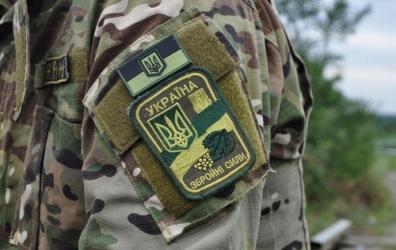Occupied Donbas arms Middle East

The occupied areas of Donetsk and Luhansk regions of Ukraine have ceased to be just a subject of Kremlin pressure on the official Kyiv. There are indications showing that this de facto no man's land, held by the Russian proxies, has turned into an industrial park and logistics center for the illegal production and smuggling of weapons, including to the Middle East.
Prior to the start of the Russian aggression against Ukraine, Donetsk and Luhansk regions were among the most industrialized areas of the country. With gross regional product at UAH 164 billion in 2013, Donetsk region was Ukraine’s second most developed area, after the capital city of Kyiv.
Given the high cost of aggression, the Kremlin has obviously been trying to get the best out of the war-torn region.
After the occupation, a number of local industrial landmarks were looted. Some factories were disassembled to be cut into scrap metal, but some technologies were taken back to Russia on reverse route of the so-called "humanitarian" convoys. However, there are bits of information squeezing through the contact line in the ATO zone that the remaining industrial capacities are far from being idle. Instead, some enterprises have been working non-stop lately.
According to various reports, some of Donetsk and Luhansk companies were readjusted to service military equipment, produce small arms, explosives and ammunition. To some extent, this information was confirmed by aerial reconnaissance drones, which detected such repair centers and warehouses. But it’s far more difficult to identify and locate facilities for production of weapons. Drones and satellites have not yet learned to peek through the walls.
But the scale of the arms market in Donbas goes beyond small arms and explosives. For instance, the production facilities of Komsomolskoye Rudoupravlenie near Starobesheve in region Donetsk region are now being used at full capacity. Allegedly, it takes three 12-hour shifts to assemble portable modifications of MLRS Grad. It's called Grad-P, where "P" stands for “Partisan” [Insurgent]. In summer, the video appeared on the Internet showing tests launch of Grad-P from the territory of the said company.
This portable MLRS has been designed by Soviet engineers in the 1960s at the request of the Vietnamese Socialists, who fought with U.S. forces at the time. The launcher was recommended as weapons for Special Forces, commando units, which conducted insurgent-type sabotage activities.
The Soviet Union supplied the system to its satellites around the world — from Cuba and Nicaragua to Syria and Palestine. Using the modern rhetoric, one can say that the Soviet Union armed militants and terrorists, which is only confirmed with recent events.
Grad-P has been used by the “DPR-LPR” militants against the Ukrainian troops, while Hamas terrorists use Qassam, which looks exactly like Grad-P. So, it’s quite possible that some Qassams are just guised Soviet, or should we say Russian, weapons directed against Israel.
It’s not only Hamas who uses such weapons in the Middle East. Multiple videos show ISIL terrorists engaging portable missile launchers, looking similar to Qassam or Grad-P. There are plenty of versions regarding the origin of these deadly weapons supplied to radical Islamists. They may have as well been seized at the warehouses of Bashar al-Assad’s army. But despite no recent reports on the capture of any new arms depots in Syria by the terrorists, they don’t seem to run out of missiles for these launchers.
An interesting point is that in early December, the Ukrainian special services detained ISIL supporters with weapons produced in the occupied territories of Donbas, while in November, some media reports (later debunked by online activists) tried to accuse official Kyiv of supplying arms to the Islamic State. According to those reports, a Lebanese national detained in Kuwait has told he had purchased weapons, aimed for the Syrian terrorists, in Ukraine, including the Chinese MANPADs. As it turned out, the Lebanese and his accomplices had never crossed the Ukrainian border, while the country’s arms exports watchdog had never granted permits for import/export/ transit through the territory of Ukraine of Chinese MANPADs. Some Ukrainian analysts believe that the weapons come from the occupied regions of Ukraine and are shipped to the Middle East from the sea ports of the Russian-annexed Crimea.
At its current state, the occupied Donbas is a perfect place, the grey zone, where the weapons, in fact, any weapons, may be produced, to be later shipped abroad, in breach of international agreements signed by the the state actors, to various hot spots around the world, especially to the regions where Vladimir Putin’s ambitions are the largest. Meanwhile, the Kremlin cynically invites the West to form a broader coalition to fight the terrorists, whom Moscow may as well arm.
Yevgeny Matyushenko
Политика конфиденциальности | Правила пользования сайтом







